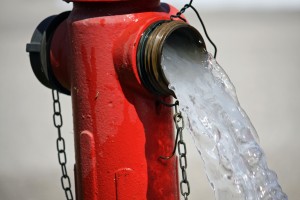
Drought. For some regions, it is becoming the new normal. Simultaneously demand from increased population, agriculture, and commercial use continues to rise. Utilities, more than ever, have to make every drop count.
In many ways, drought creates a series of defeating scenarios for your water system and your revenue. Managing your utility, running your treatment plant, maintaining the distribution system does not take fewer people just because you have less source water to treat. If anything, it takes more time to manage a scarce resource and make every drop count. At the same time, you may have had to initiate voluntary, or worse, mandatory, water use restrictions, cutting back on customer usage and cutting deeply into your “billable” water, your revenue.
But it gets worse. Drought and the water restrictions that often accompany it have another impact – increased water age in your distribution piping. That increased water age may make it difficult to maintain your chlorine residual. You know how critical that residual is to maintaining the health of the drinking water you provide. So, you do what you know you have to do – you flush the lines. There goes that precious resource, your revenue, right down the storm drain.
Flushing – visible and a public relations nightmare.

Your customer service staff tries to explain the importance of maintaining a chlorine residual, that it is for their health….but their explanations fall on deaf ears. Your customers don’t understand, nor do they care, about chlorine residuals. The water seems fine to them. All they know is you are asking them to conserve and it is costing them dearly. Yet here you are doing EXACTLY what you are asking them NOT to do – WASTE WATER!
What is worse? You know that flushing will become more frequent, not less, the longer this drought continues.
News flash – flushing does not get to the root cause of low residuals.
Okay, you know this. Flushing may restore chlorine residuals for a time, but flushing alone does not solve the root cause of low chlorine residuals. The root cause is chlorine demand that comes from deposits in the line – biofilm, sediments, and scale – those natural deposits that build up in every distribution system. To make matters worse, while consuming chlorine and driving down residuals, these deposits create another headache – disinfection by products (DBPs).
Flushing alone is not effective in removing these deposits. Biofilms are protected by polysaccharides that hold the mass together like glue, cementing those biofilms in place and keeping the bacteria safe from disinfection. Even increasing your chlorine residual, in an attempt to kill them, is not very effective at removing these organic deposits and drives up DBP formation.
Fortunately, there is a better way.
Blue Earth Products engineered a powerful solution called Clearitas®, which attacks the root cause of low residuals, those deposits and the polysaccharide glue that holds them in place, and breaks them down. Then, you can finally flush these organics OUT of your system. Maintaining a low dose of Clearitas® in your system keeps these deposits from reforming.
Result? You maintain your chlorine residuals and reduce DBP formation, improving the health of your water. Equally important, you reduce the need for flushing and do what you are asking your customers to do, make every drop count.
By keeping your lines cleaner, you may even reduce the friction in the distribution system and reduce your energy costs.
Safe, effective, economical.
Safe for your customers. Safe for your crew. Clearitas® is NSF 60 certified as a water supply additive and is considered non-hazardous to health by the OSHA Hazard Communication Standard (29 CFR 1910.1200). Clearitas® does not change the corrosivity of the water, nor affect lead and copper levels.
Blue Earth Products offers a complete line of Clearitas® products and will help you select the one that is right for your system, based on your unique water chemistry and deposits. All Clearitas® products offer the same results:
- Improve the condition of your infrastructure piping
- Reduce flushing – make every drop of revenue water count
- Maintain chlorine residuals – improve the overall water quality and assure the health of your consumers
- Reduce DBP formation – stay in compliance and provide safer, higher quality water
So stop flushing your revenue down the drains.
You owe it to yourself to learn how Blue Earth Products helped South Jackson County, WVA reduce their chlorine demand and DBP formation to stay in compliance, reducing the need for flushing. Download the case study below to find out how it all happened within in a matter of months.

